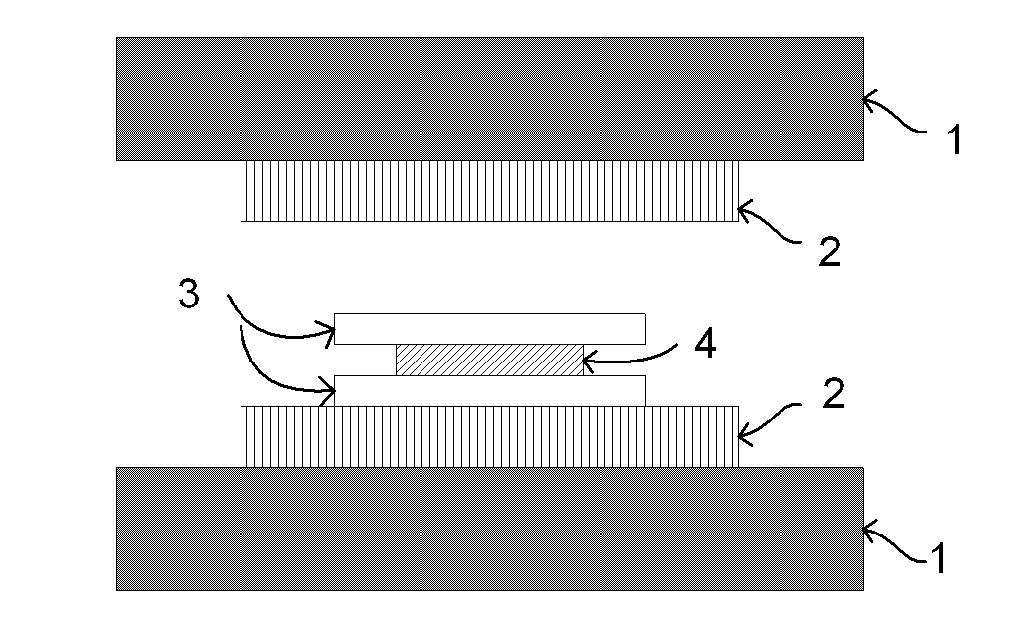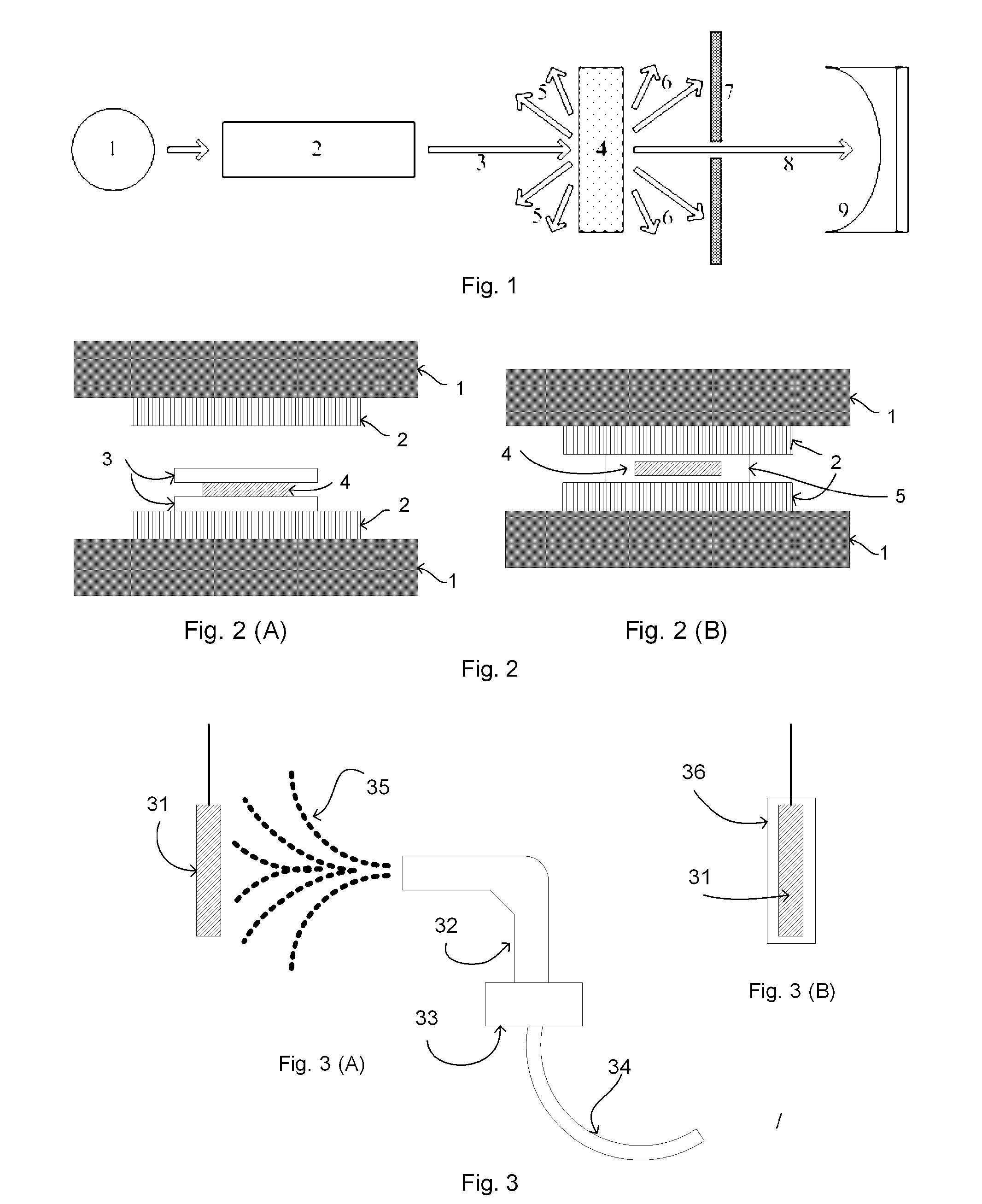Solar cell module
- Summary
- Abstract
- Description
- Claims
- Application Information
AI Technical Summary
Benefits of technology
Problems solved by technology
Method used
Image
Examples
example 2
Film Manufacturing (Extrusion)
[0162]The extrusion of the polymer obtained as detailed in example 1 was carried out in a conventional film extrusion line. The pellets of the polymer were charged into the hopper of an extruder having a diameter of 45 mm and a screw length of 24 diameters. The barrel of the extruder was heated with four thermal heaters set, starting from the hopper, at 240, 255, 260, 265° C. respectively. The connecting parts between the barrel and the die were hated at 270-275° C., while the die temperature was set at 290-300° C. The die had a width of 950 mm with the lips opening of 0.55 mm. The polymer was extruded at 12 rpm and the line speed was about 1.3 m / min. The temperatures of the calender rolls were set at 130° C.
[0163]The polymer was processed yielding a transparent, smooth film with no pinholes or defects, having a thickness of 50 μm.
[0164]Said film was found to have a transmittance of U.V. light at a wavelength of 254 nm of 87.5%.
[0165]Similarly as descri...
example 3
Thermal Encapsulation
[0168]In a heating press, between two steel plates (1), a silicon-based photovoltaic element (4) was assembled with two portions (3) of the film obtained as described in example 2 and sandwiched between two sheets of PTFE (2), as depicted in FIG. 2(A). The photovoltaic element was previously pre-treated at 200° C. for at least 30 minutes in order to eliminate moisture and other contaminants from the silicon surface.
[0169]The so-obtained assembly, as depicted in FIG. 2(B), was submitted to the following thermal treatment
[0170]1) pre heating of the heating press at 250° C.;
[0171]2) introduction of the assembly in the heating press;
[0172]3) heating of the assembly from r.t. to 250° C. in around 2 minutes;
[0173]4) continuous heating at 250° C. of the assembly with no applied pressure;
[0174]5) during 190 sec, heating was pursued by alternatively applying a pressure of 2 bars for 5 seconds and releasing said pressure;
[0175]6) heating of the assembly under a pressure o...
example 4
[0178]The dry powder of the polymer prepared according to the example 1 was loaded in the reservoir (33) of an electrostatic gun (32), equipped with a compressed air supply (34). A photovoltaic element (31) was heated at 250° C., earthed and the fine powder of polymer of example 1 (35) was sprinkled on the surface of the heated thereon, as depicted in FIG. 3(A) so as to obtain a solar cell module (36) having a photovoltaic element encapsulated between a front layer on its light receiving surface side and a back layer, both made from polymer of example 1 here above.
[0179]The solar cell module was found to assure suitable protection to the photovoltaic element and consistent encapsulation of said element with no delamination phenomena.
PUM
| Property | Measurement | Unit |
|---|---|---|
| Temperature | aaaaa | aaaaa |
| Temperature | aaaaa | aaaaa |
| Molality | aaaaa | aaaaa |
Abstract
Description
Claims
Application Information
 Login to View More
Login to View More - R&D
- Intellectual Property
- Life Sciences
- Materials
- Tech Scout
- Unparalleled Data Quality
- Higher Quality Content
- 60% Fewer Hallucinations
Browse by: Latest US Patents, China's latest patents, Technical Efficacy Thesaurus, Application Domain, Technology Topic, Popular Technical Reports.
© 2025 PatSnap. All rights reserved.Legal|Privacy policy|Modern Slavery Act Transparency Statement|Sitemap|About US| Contact US: help@patsnap.com



